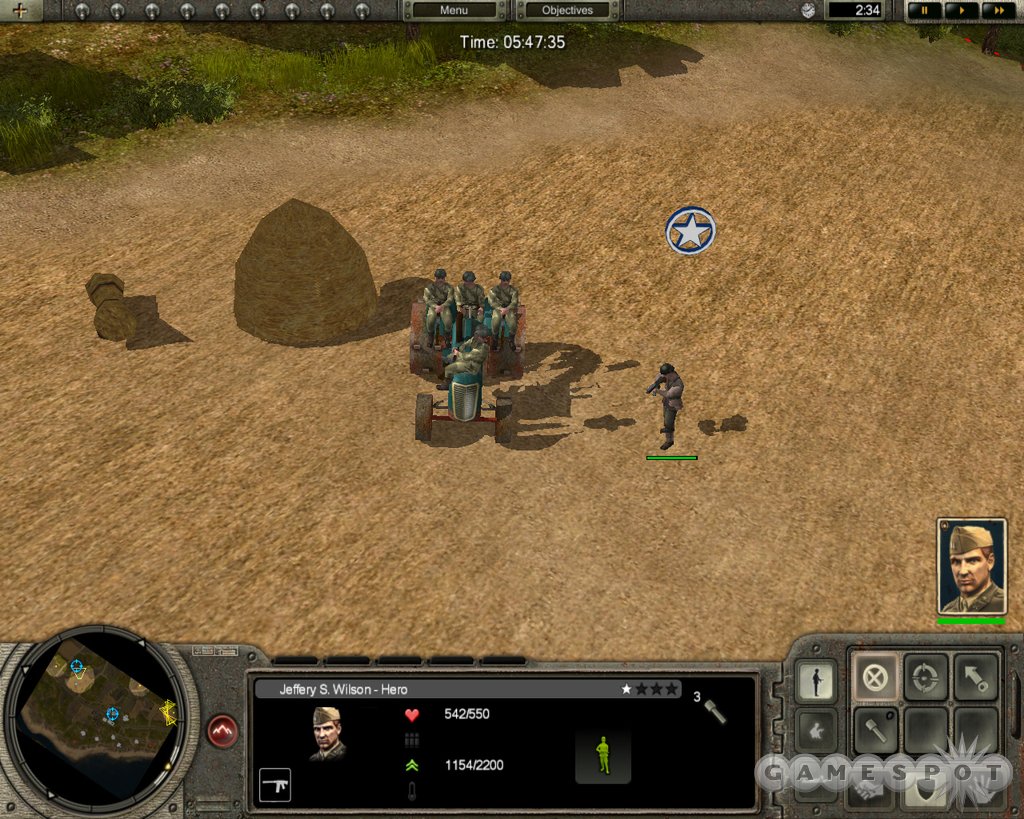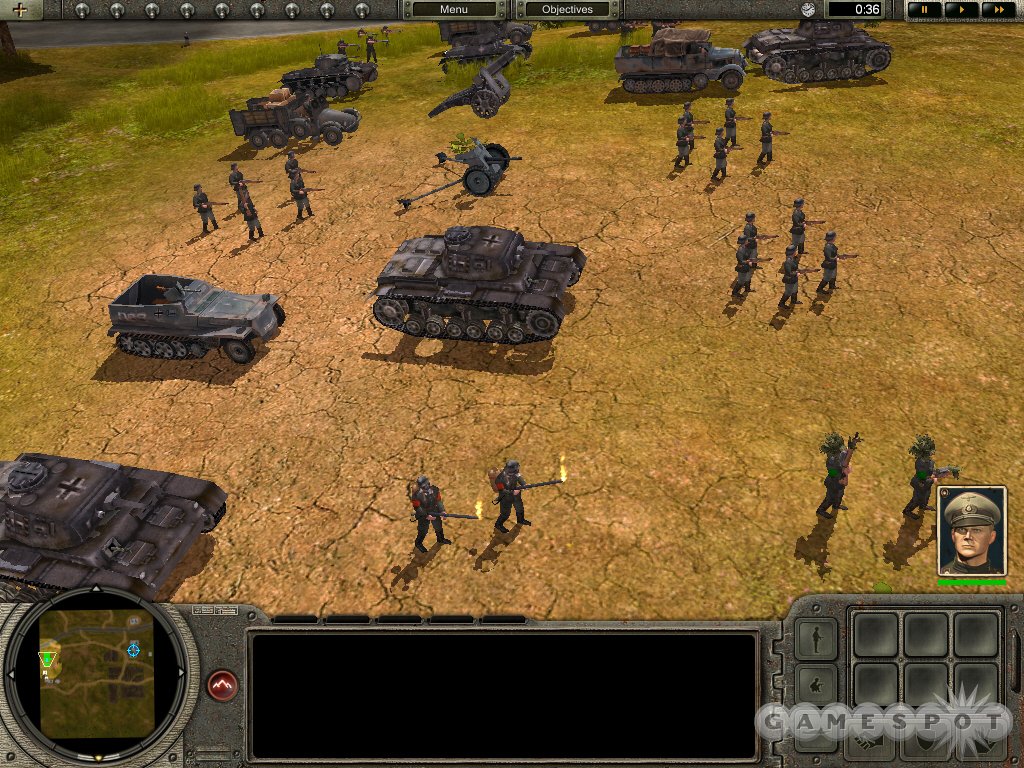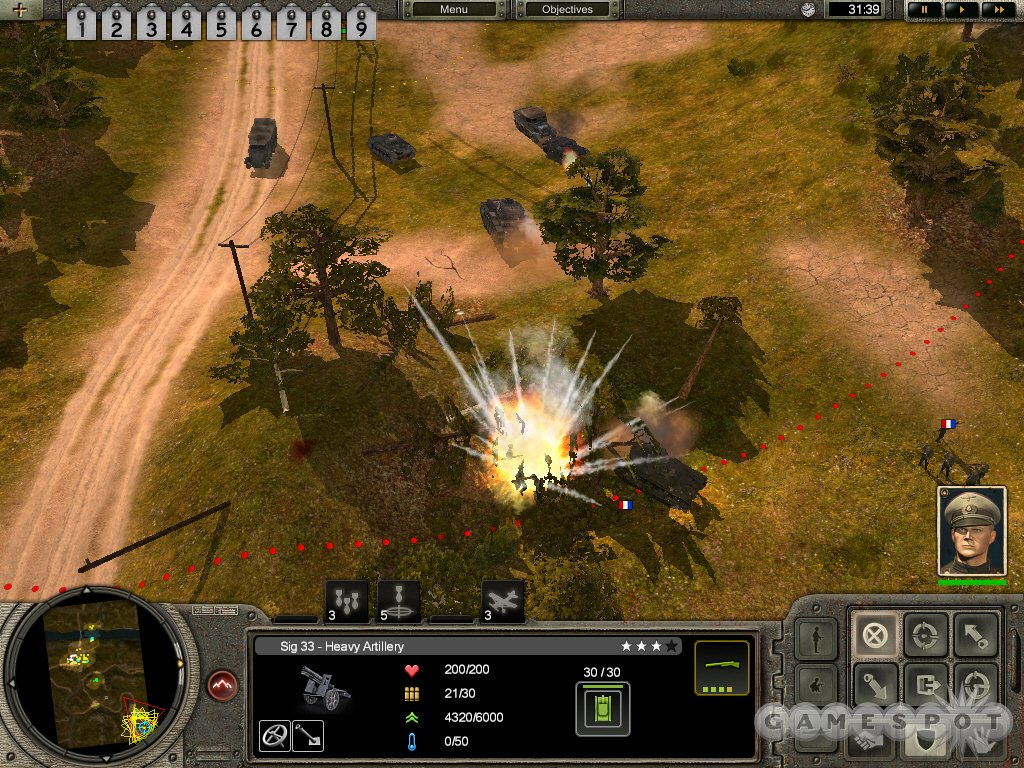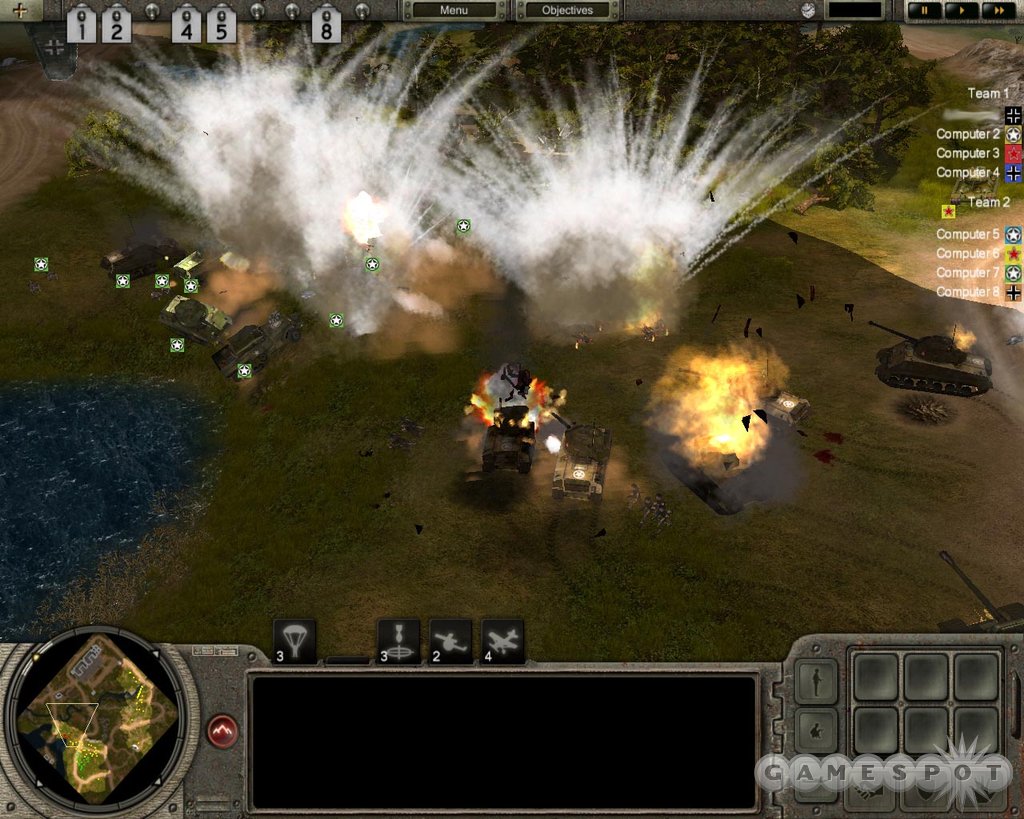Stormregion's 2001 real-time strategy title S.W.I.N.E. featured pigs and rabbits engaged in a fictional war that drew parallels to World War II events. The company's latest game, Codename: Panzers, visits World War II for real. It features many of the original gameplay elements found in S.W.I.N.E., including graphics that are every bit as state-of-the-art today as S.W.I.N.E.'s were for its time. Furthermore, Codename: Panzers adds numerous other well-thought-out features and enhancements, it provides plenty of interesting units and destructible environments to play around with, and it contains a ton of content, including three big campaigns, all of which result in an excellent, all-around real-time strategy game. There may be plenty of higher profile real-time strategy games available at this time, but Codename: Panzers is good enough to be just as deserving of your attention.

The game's three single-player campaigns occur at different times during World War II. The German campaign follows the invasion of Poland, France, and the Soviet Union; the Russian campaign deals with the Soviets pushing back the German invaders; and the Allied campaign takes place during D-Day and beyond. Each side follows the commander of its respective army, which adds a real human touch to the proceedings. Every mission begins with the commander writing in his journal. These journal entries don't really have any impact on or relevance to the upcoming missions or gameplay, but they're a nice addition that gives your commander (and the game) some personality.
The 30 single-player missions in Codename: Panzers are varied both in their objectives and format. You're always moving from one part of the war to another, so the missions and environments don't get repetitive. You'll find yourself tasked with eliminating enemy forces, capturing towns, defending locations, and protecting convoys, among many other responsibilities. Some missions will have multiple objectives as well as secondary objectives. Unlike in many real-time strategy games, though, the secondary objectives in Codename: Panzers are actually worth pursuing. If you successfully complete a secondary objective, you'll be rewarded with extra prestige points--these are very important because they're used to purchase units for your army in between missions.
Codename: Panzers doesn't bog you down with base-building mechanics. After you purchase units, you deploy your army at the start of the mission. You occasionally have some support abilities, such as recon planes and dive bombers, and once in while you receive some reinforcements--but, otherwise, what you deploy is exactly what you'll have to work with. Since you have limited units, you need to be careful with your battlefield tactics, especially in the latter missions, which will truly test your mettle. To make matters more interesting, your vehicles even have limited ammunition. You can deploy repair and ammunition trucks, although these have a limited supply as well. However, the missions are balanced well so you shouldn't ever be faced with repair or ammunition shortages if you proceed with caution. In general, the way in which Codename: Panzers puts the emphasis on complex unit tactics works extremely well.

There are three classes of units in your army: infantry, vehicles, and stationary guns. There's a surprising variety of units in these categories, which means you can field an army that suits your style. Infantry includes everything from riflemen to flamethrowers. Vehicles include tanks and half-tracks, and the gun category has antitank, artillery, and antiaircraft guns. Since your army can only have a maximum of 25 units deployed, you're going to want to deploy a diverse force. There are various tactics and combinations you can use, all of which can get the job done if used correctly.
Some units will become useless as you gain prestige, though. Once you have more than enough prestige, you might as well have the better and more expensive tanks than the cheaper and weaker ones. And once you hit your unit limit in the latter missions in a campaign, you will want to pick up self-propelled artillery rather than the stationary artillery. You need infantry to man the stationary guns, and possibly even a truck to tow the guns because they're slow to move across the map--so three units is wasteful when you can have everything in one self-propelled unit. This is unfortunate, because your endgame army is probably going to be very vehicle-centric--however, some of the best experiences that Codename: Panzers has to offer are when you get to employ combined arms from all three categories. It's here when the complexity of the game engine, as well as the visual detail in the game, truly shines.
Infantry in Codename: Panzers are very weak, but they are arguably some of the most important units in the game, and they are very interesting to command. As noted, infantry are needed to man some of your equipment. They can also interact with the environment by garrisoning buildings, hopping into cars on the road, or by using purchased equipment. In the army screen, you can equip infantry with two pieces of equipment. Binoculars can be used to dramatically increase your field of vision. You can buy rafts to send infantry across rivers. You can buy mines, grenades, Molotov cocktails, and explosive charges to stick onto vehicles. The infantry diversity is also fun to experiment with. Submachine gunners are great for flushing out enemy troops garrisoned in a building if you want the building for yourself. Medics will heal your infantry, and mortars will lob explosives at enemies. Even though the backbone of your army is going to be the tanks, it's the infantry that are probably the most entertaining to use. The sheer variety in this unit category alone makes Codename: Panzers quite a bit more engaging than the average real-time strategy game.

You'll find a lot of other interesting gameplay elements in Codename: Panzers. Vehicle movement is handled realistically--vehicles back up and rotate into position as you'd expect them to. Tanks can plow through trees, fences, and low barricades as if there were nothing there. Artillery shells have trajectories, so if a building is in their way, then the building is going to get hit--and hit hard. It's spectacular to see the impact of these artillery shells on the ground and to see the buildings collapse when they are hit. You can capture enemy tanks, even if they're occupied by tank crews. If you can get close enough with flametroopers or soldiers equipped with Molotov cocktails, then you can roast the tank, forcing the crew to evacuate when the temperature gets too hot. When it cools down, you simply walk up with your own tank crew, and voila, the tank is yours.
Furthermore, some of your vehicles are armored, such as tanks and half-tracks, and this just doesn't count as extra hit points as it does in most real-time strategy games. Here the armor works like armor. Small arms fire won't even dent armored vehicles, and as such, your infantry shouldn't ever attempt to fire on them--unless they're properly equipped antitank or mortar infantry, that is. A vehicle's armor rating must be reduced before the vehicle itself takes health damage. Most armored vehicles have a stronger armor value in the front than in the rear, so it pays to use flanking maneuvers. This is especially true when fighting enemy gun emplacements. If you can get infantry behind an enemy artillery gun, you can wipe out the soldiers manning the gun (whose backs are exposed) and take the emplacement for yourself instead of destroying it.
One complaint we have with the gameplay is that when you fire artillery out of your field of vision, you can tell you've damaged a military target (as opposed to hitting nothing of importance) by the type of explosion that results. So even without the proper reconnaissance, it's sometimes possible to tell when the coast is clear for you to advance when you've got artillery on your side. Considering how many types of complex mechanics that Codename: Panzers handles so capably, though, this is a rather minor issue.
The artificial intelligence of both your forces and opposing computer-controlled forces is quite good. Your units will generally path well; that is, they won't get stuck on objects and will make it to the location you order them to. The computer AI is a tough opponent and it will force you to save your progress often, for fear of its unpredictable and fierce tactics. However, we did experience some moments when we shelled an enemy unit while it just sat there. Your own units have behavior settings and are easy to control. There are no automatic formations in the game, which is too bad. But if you individually set up each unit in a group, select them all and then move them, they will usually arrive in the same formation in which you placed them.
Codename: Panzers' presentation is excellent, especially the graphics, which are superb. Units look great, even when you zoom in for an up-close look at them. You'll notice a great amount of detail on every single unit. The animations also look fantastic. For example, take a squad of riflemen manning an antitank gun. Two men push the gun, while the other three hunker down and keep pace with the gun. The cutscenes are handled in-engine and look quite nice, even though there are no facial expressions or moving lips on the character models. Even the wartime-era images on the loading screens are slick, adding to the game's style and presentation. The music and audio is also great. In journal entries, the commanders speak English, but with a fairly accurate accent of their native land. During missions, units will acknowledge orders in their native language, which is a nice touch. The music is good and fits the action well, though it isn't especially memorable.

When you finish the single-player campaign, there are skirmish, scenario, and multiplayer options to extend the game. All of these will let you purchase an army with a preset prestige limit, and then you'll be able to face off against opponents. The scenario mode only has a few maps to choose from, and it seems pretty limited. There's no scenario editor, but the developer, Stormregion, will hopefully release more scenarios at some point. The skirmish mode is a one-on-one or team-based game against the computer. There's a standard deathmatch, a domination mode in which you must capture and hold buildings, and an assault mode in which you must attack or defend an objective. Multiplayer features these three modes, plus the welcomed addition of a cooperative mode where you can tackle some of the single-player missions with a friend. You can play on a LAN, via direct IP, or go online and search for open sessions from a built-in server browser. It seems like the multiplayer mode doesn't have the same level of polish as the single-player game, however. The server browser is rudimentary, only giving you a list of servers to join and a chat window. Clicking on the objectives tab only gives you a description of the multiplayer modes; you won't find out exactly what you need to destroy in the assault mode. However, the multiplayer itself is still fun, thanks to Codename: Panzers' excellent gameplay--matches are typically fast paced and short, making it a worthwhile extension of the game.
Codename: Panzers has everything you'd expect from a quality real-time strategy game. The single-player campaign is both lengthy and challenging--each mission can easily take an hour or longer to complete. There are multiple, viable tactics you can utilize in these missions, too, which gives them some inherent replay value. The environments in the game are not only beautiful, but also highly interactive, which makes the combat highly complex as it unfolds and very fun to watch. Multiplayer doesn't necessarily seem like the game's strong suit, unfortunately. But even this part of the game can still be tremendously rewarding if you can find a good session against a willing opponent. In the end, this is an excellent example of a military-themed real-time strategy game, and its focused game design and outstanding presentation are deserving of high praise.